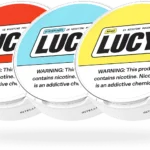Snus is a smokeless tobacco product, originally from Sweden, that has gained popularity worldwide. Unlike other forms of smokeless tobacco, snus is pasteurized and comes in moist, finely ground form. It’s often sold in small pouches, similar to tea bags, and is known for its distinct preparation process and varied flavors.
How to Use Snus
Here’s a step-by-step guide on how to use snus:
- Choose Your Snus: Available in various strengths and flavors, select one that suits your preference.
- Place it Under Your Lip: Place the snus pouch between your gum and upper lip. It doesn’t require chewing or spitting.
- Keep it in Place: Let the pouch sit. Nicotine and flavors will release gradually. Duration varies, but it typically lasts between 30 minutes to an hour.
- Dispose of Properly: After use, dispose of the pouch in a trash bin.
 Side Effects of Snus
Side Effects of Snus
Like all tobacco products, snus carries potential health risks:
- Nicotine Addiction: Contains nicotine, which is addictive.
- Gum and Tooth Issues: Prolonged use can lead to gum recession or tooth discoloration.
- Cardiovascular Risks: May increase heart rate and blood pressure.
The Difference Between Nicotine Pouches and Snus
While snus and nicotine pouches may seem similar, there’s a crucial difference:
- Tobacco Content: The most significant difference is that snus contains tobacco, whereas nicotine pouches do not. Nicotine pouches are made with nicotine salts and other ingredients like flavorings and fillers, offering a tobacco-free alternative.
- Health Implications: The absence of tobacco in nicotine pouches may reduce certain health risks associated with tobacco use, such as oral cancers.
- Flavor and Experience: Nicotine pouches often come in a wider range of flavors, as they’re not limited by the taste of tobacco.
- Regulatory Status: In some regions, the legal and regulatory status of nicotine pouches differs from that of snus due to the lack of tobacco.
Is Snus Safer than Cigarettes?
Here’s how snus compares to traditional cigarettes:
- Smoke-Free: Snus doesn’t involve combustion or inhalation of smoke, which is a major cause of lung-related diseases in cigarettes.
- Lower Cancer Risk: Research suggests lower incidences of lung, mouth, and throat cancer compared to smoking.
- Controlled Nicotine Delivery: Offers a more controlled nicotine release compared to the sudden spike from smoking.
While snus is considered a “safer” alternative to cigarettes, primarily due to the absence of smoke inhalation, it’s important to note that it’s not completely risk-free. The best choice for health is to avoid tobacco and nicotine products altogether.
Conclusion
Snus offers an alternative way of consuming tobacco, distinct from traditional smoking. Its growing popularity is attributed to its convenience, discreet use, and perceived lower health risks compared to cigarettes. However, users should remain aware of its addictive nature and the potential health risks associated with prolonged use.


